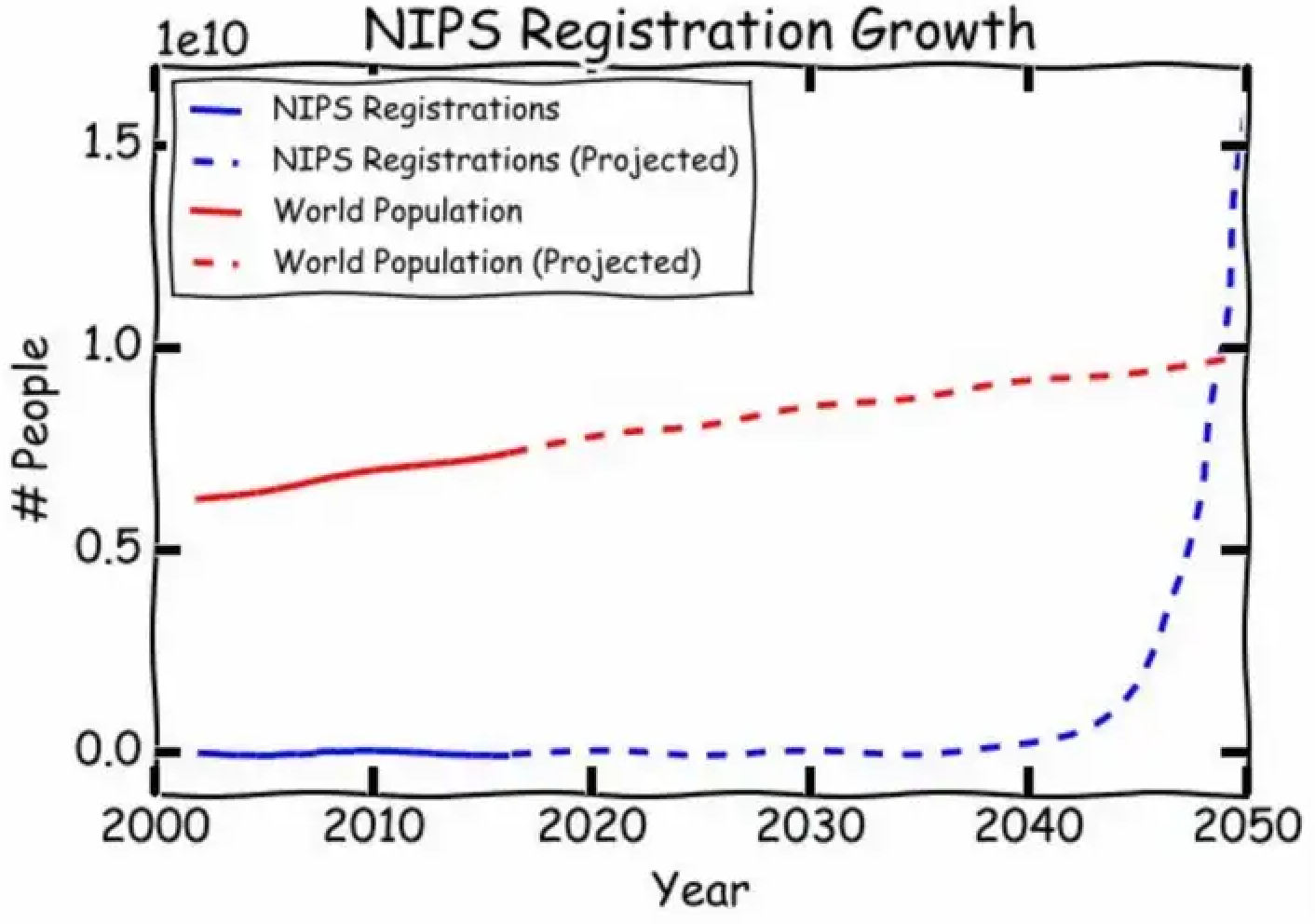🌊 Submission Tsunami at NeurIPS 2025: Is Peer Review About to Collapse?
-

Headline number — NeurIPS 2025’s main track received roughly 25,000 submissions.
That's 60 times the submission volume of 2010, nearly triple since 2019, and a staggering compound annual growth rate (CAGR) of about 29% since 2017 (3,240 submissions).
 Why It Matters
Why It MattersPressure Point What 25,000 submissions really mean… Reviewer overload 🥵 30 minutes per paper = 12,500 person hours — over 6 years full-time. A 2-hour review? Try 50+ person-years. Quality signal-to-noise 
Reports of rushed literature reviews, LLM rewritten old ideas, shaky benchmarks, and duplicates are up. ~20,000 papers may be rejected. Corporate gravity 
Industry labs are driving submission growth, shifting focus toward product oriented, compute heavy research. Carbon cost 
Reproducibility runs + thousands of flights = a large environmental footprint. Calls grow for greener workflows.
 If Growth Continues…
If Growth Continues…- The first 1 million submissions/year may arrive around 2040 (25,000 × 1.29¹⁵ ≈ 1.1M).
- By ~2075, NeurIPS could theoretically receive one paper per human on Earth.
- Maintaining today’s 6 paper per reviewer workload would require 20,000+ active reviewers.
 ️ Emerging Counter-Measures
️ Emerging Counter-MeasuresSymptom Experiments Underway Crushing review load 
Paid professional reviewers, AI-assisted triage, multi-stage screen-then-review pipelines Reproducibility gaps 
Shared GPU clusters for automatic verification, stronger code/data release mandates Conference bloat 
Rolling deadlines, and specialised sub-tracks Carbon footprint 
Regional hubs, default-virtual attendance, and energy disclosure in reviews
 Quick Facts to Drop in Conversation
Quick Facts to Drop in Conversation- 29% CAGR → ~5 million submissions/year by mid-2040s if nothing changes
- 6 full-time years just to skim this year’s submissions; 3× more for deep review
- NeurIPS was called “NIPS” until 2018
- Acceptance rate has remained steady at 20 to 25% despite the submission explosion
- Reviewer travel + GPU training now factor into AI’s carbon ledger
 Bottom Line
Bottom LineThe milestone of 25,000 submissions at NeurIPS 2025 is both thrilling and alarming. It highlights the global appetite for AI progress, but also exposes the strain on a volunteer-run, deadline-driven mega-conference. Unless we rethink publication and validation workflows, peer review may soon collapse under its own success.
-
-
Was this written by an LLM, lol? "30 minutes per paper = 12,500 person hours — over 6 years full-time. A 2-hour review? Try 50+ person-years."
30 minutes per paper = 12,500 person hours — 1,4 PERSON YEARS, AND 2-HOUR REVIEWS ARE X4, SO 5.7 YEARS, NOT 50@Tari-S Thanks for pointing out the confusion.
I'd like to clarify the diff between calendar hours and full-time work hours (FTE). A person-year in reviewing is typically ~2,000–2,080 work hours, not 8,760 calendar hours.
Three scenario:
-
Skim pass (30 min/paper):
25,000 × 0.5 h = 12,500 h → 6.0–6.5 FTE-years (12,500 ÷ 2,080 ≈ 6.01; ÷ 2,000 = 6.25). -
Single in-depth review (2 h/paper):
25,000 × 2 h = 50,000 h → 24.0–26.0 FTE-years (not 50+ yet). -
What would make it 50+?
Typical programs use ≥3 reviews/paper.
3 × 2 h = 6 h/paper ⇒ 25,000 × 6 h = 150,000 h → 72–78 FTE-years.
Add meta-review/AC time (≈0.5–1 h/paper) and you’re at ~78–91 FTE-years.
So:
- “1.4 person-years” uses the wrong denominator (calendar hours).
- “50+ person-years” is too high for a single pass, but reasonable (and actually conservative) once you include multiple reviews and overhead.
-


